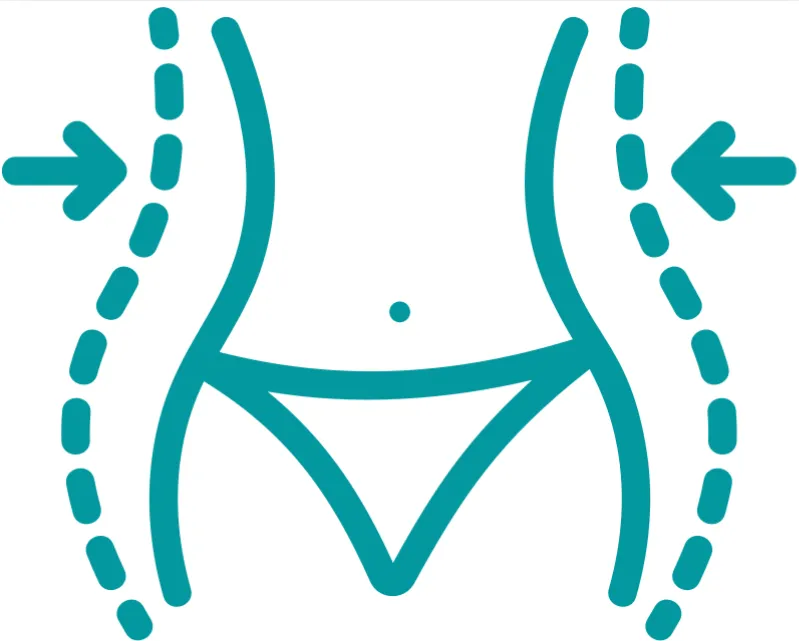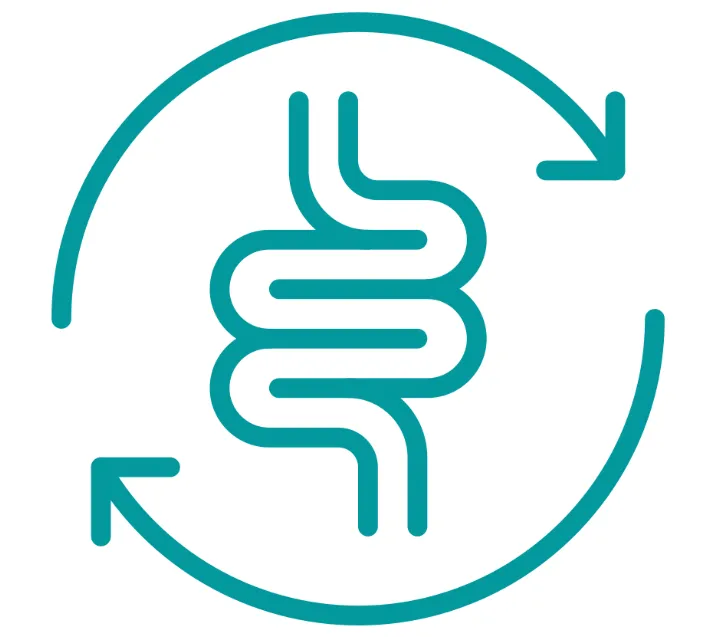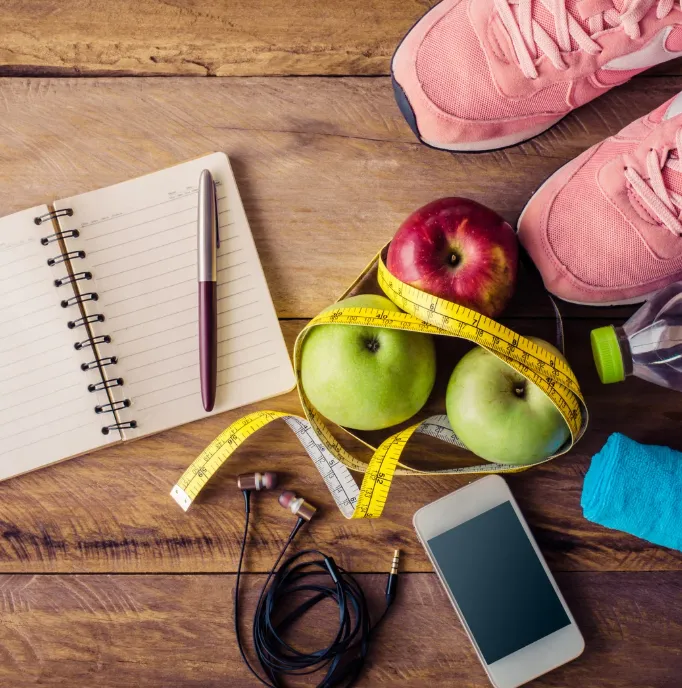Get to the Root of Hormonal, Digestive, and Weight Concerns Naturally
A science-based method that reveals underlying imbalances and offers natural, sustainable solutions—employing Functional Medicine with purpose and compassion.
If you’re tired of bloating, hormone swings, stubborn weight, or endless guessing, you’re in the right place.
We use Functional Medicine to uncover the real cause and create a step-by-step plan so you can feel like yourself again.
What is Functional Medicine?
Functional Medicine looks at the root cause of your health issues — not just masking symptoms.
Instead of a “quick fix” approach, it connects the dots between your hormones, digestion, nutrition, stress, toxins, and lifestyle so your body can heal naturally.
Example:
If you go to a conventional doctor for chronic headaches, you might leave with a prescription for over-the-counter pain relievers, migraine medication, or be referred for an MRI.
In Functional Medicine, we dig deeper. We’ll ask about your diet, check for magnesium deficiencies, review medication use (like PPIs that deplete nutrients and minerals), and explore stress levels that may be affecting your nervous system.
The goal? Find the why your headaches are happening — so they stop coming back using natural solutions based on nutrition and lifestyle changes.
👉 Want to learn more? Go to What is Functional Medicine? The Future of Healing Your Body

Take Back Control of Your Health — Before It’s Too Late
80% of chronic diseases are lifestyle-related — and preventable when you address the root causes.
But too many people wait until they’re exhausted, in pain, or facing a diagnosis.
Women, especially, give endlessly to others and ignore their own needs until burnout sets in. Then the doctor says, “Your labs look fine” — even though you feel anything but fine.
We help you act now — before your health limits your freedom and independence.
Our goal is to keep you moving with ease, living without chronic pain, and enjoying the activities you love — without waiting for a formal diagnosis or letting things progress until they’re hard to reverse.

We help with:
• Hormonal imbalances (PMS, menopause, thyroid issues)
• Digestive problems (bloating, constipation, reflux)
• Fatigue, low energy, poor sleep
• Weight gain and slow metabolism
• Blood sugar issues & pre-diabetes
• Mood swings & inflammation-related skin problems.
Weight Loss

Hormone Balance

Gut Health

We Don't Treat:
• Medical emergencies or acute injuries
• Severe psychiatric disorders
• Active cancer treatment
• Advanced, unstable heart disease
• Fast fixes or prescriptions – We do not offer pharmaceutical solutions such as weight-loss injections (e.g. GLP-1 agonists), hormone pellets, or patches. Medication prescribing, adjustments, or replacements are outside the scope of our programs.
Our focus is on identifying and addressing root causes through natural, lifestyle-based approaches. If needed, we can refer you to a licensed medical practitioner—but this is not the primary intent of our work together.
Important: We are not a replacement for your primary care provider or specialist. Our services complement — not replace — conventional medical care.
Our focus: Root-cause, proactive, and preventive care that uses nutrition, lifestyle, and Functional Medicine principles to help your body heal naturally - without quick, temporary fixes.

What Makes Splendhealth Different
At Splendhealth, we believe in less, but better.
No endless supplements. No one-size-fits-all programs. No empty promises.
We are your trusted guide — combining science, strategy, and genuine care to help you address the root causes of your health challenges.
Our approach is built on:
🎯 Sincerity & Care – You are more than your symptoms. We listen, understand, and guide you—even if the best next step isn’t with us.
🧠 Clinical Precision – Every protocol is grounded in science and tailored to your unique biology.
🌿 Minimalist Protocols – Fewer, smarter supplements and tests—only what you truly need.
🤝 Collaborative Support – We partner with your other providers and complementary specialists for complete care.
✨ Real-Life Fit – Plans that work in your busy life without extreme restrictions or complicated routines.
We deliver clarity, personalized guidance, and sustainable results—so you can take back control of your health and your future.

MEET your wellness team
We always say "Our Practice doesn't stay in our Practice". At Splendhealth, your care doesn’t stop at our door.
We authentically care about every program participant, which is why we collaborate with a wide network of trusted professionals to give you the most complete support possible.
Our partnerships include:
Conventional Medicine – Your PCP, endocrinologist, OB/GYN, and other medical providers
Specialized Care – Chiropractors, physical therapists, pelvic floor therapists, and Intimacy & Relationship educators
Nutrition & Lifestyle Experts – Nutritionists, fitness coaches, and other wellness specialists
We connect the dots between these modalities to address lifestyle-related conditions that often go unexplained or unresolved in traditional healthcare.
The result? A personalized, well-rounded approach that helps you feel better, function better, and live better.

OUR SERVICES
• 90-Day Whole Systems Optimization Plan
Lose weight, rebalance hormones, and restore your energy—naturally.
A science-backed, natural strategy to uncover the root causes of your hormone, weight, and gut struggles — and finally resolve them.
• Feel Splendid Again
(Online Program for Women)
Be the first to join this 3-month plan to shed pounds, balance hormones, and feel like yourself again
Perfect for women navigating PMS, menopause, low libido, or fatigue, this digital program shows you exactly what’s going on in your body and how to restore balance naturally—without extreme diets or endless workouts.
📌 Limited capacity — secure your spot on the early access list today.
• Workshops & Courses (Coming Soon)
Practical, results-focused sessions to jumpstart your health goals.
Learn easy, science-based strategies for digestion, hormones, detox, inflammation, and everyday wellness. Designed to educate, inspire, and give you tools you can apply right away.
OUR SERVICES FEATURES

Personalized Plans
Science-backed, tailored strategies built for your unique body, hormones, and lifestyle

Expert Guidance
Clear, professional direction to uncover the root causes and achieve lasting results.

Holistic Approach
A body–mind–spirit strategy that integrates multiple modalities to restore balance and well-being from every angle.

Sustainable Habits
Practical tools to create healthy, lasting changes — without extremes.

Flexible Scheduling
Coaching sessions designed to fit seamlessly into your schedule.

Supportive Community
A safe space to connect, share, and grow alongside other women on the same journey.
Splendhealth is powered by:

TESTIMONIALS
What others are saying...

“I used to have excruciating menstrual cramps badly enough to affect my work performance. This program is worth the investment. Just in a few weeks, by my next month, I noticed the difference: breast pain and cramps subsided considerably. I am also not bloated anymore, and my mood is much more balanced. My coworkers and family appreciate it. Thanks!"
- Barbara E.
Continuous Improvement Manager

“With Maria's program, I was able to improve my levels of thyroid hormones and have my energy back. In addition, I lost 15 lbs and improved my blood sugar levels enough to no longer be considered pre-diabetic. I learned many things about food and hormones from Maria that no one had ever explained to me before.”
- Laura D.
Social Worker

"After 7 years of struggling with osteoporosis, my bone density score is finally considered normal. I took different medications that were not helping me at all. Additionally, I had high levels of calcium in my blood. Using the right supplements, I was able to not only recover my bone health, but also get rid of constipation and sleep better. Now I can play with my grandkids with less fear of having a bone fracture.”
- Martha C.
Housewife, Mother & Grandmother
Your Breakthrough Starts Today
You don’t have to keep guessing what’s wrong — discover what your body truly needs so you can feel like yourself again.

In this free 15-minute strategy session, we’ll uncover what’s driving your symptoms and outline a personalized next step — rooted in Functional Medicine, nutrition, and lifestyle science.
No sales pitch. No pressure. Just clarity on the next step toward the health and energy you deserve.

POPULAR QUESTIONS
Asked Questions?
What can I expect during a wellness coaching session?
Each session is personalized to you. We’ll review your goals, current challenges, and progress, then map out clear next steps. Depending on your program, sessions may also include reviewing lab results, lifestyle strategies, nutrition guidance, and mindset coaching.
How often should I schedule sessions?
Most clients meet every 2 weeks for the best momentum, but frequency can be adjusted depending on your needs, goals, and chosen program.
How long does it take to see results?
Every body and mind heal at their own pace, but many clients notice improvements in energy, mood, digestion, and sleep within the first few weeks. Our programs focus on long-term change, so you’ll continue seeing benefits well beyond your initial plan.
Can wellness coaching help with weight loss?
Yes — but our approach goes beyond calorie counting. We address the root causes behind weight changes, such as hormones, metabolism, gut health, stress, and mindset, so results are sustainable.
What qualifications do you have?
I’m a certified Functional Medicine Health Coach, trained to work with clients on whole-body wellness. My approach blends science-backed strategies with personalized support, and I collaborate with other qualified professionals when needed.
You can learn more in the About section in the menu.

Do you work with people outside the US?
Some programs are currently available only in the US (due to lab testing and supplement shipping limitations). However, we’re developing virtual coaching options for international clients — coming soon.
Is this program only for women?
No — while many clients are women navigating menopause, thyroid shifts, or hormonal changes, our science-based, root-cause approach is open to anyone ready to improve their health.
Will my program be covered by health insurance?
We do not bill insurance directly, but many clients use their Health Savings Account (HSA) or Flexible Spending Account (FSA) to cover program costs, including labs and supplements. Check with your provider to confirm eligibility.
Do you collaborate with other providers?
Yes. Your health doesn’t exist in isolation. I may work alongside your primary care provider, naturopath, chiropractor, or other specialists to ensure your plan is truly holistic.
How much time will this take?
Our programs are designed for people ready to make meaningful changes. Expect to spend about 50 minutes per coaching session and set aside time between sessions to implement your action plan.
How do I get started with wellness coaching?
Getting started is easy! Simply schedule a consultation through our website or contact us directly. During the consultation, we'll discuss your goals, explain our approach, and determine the best coaching plan for you.

Quick Links
Location: 1105 Via Corso Avenue, Suite 11, Greenville SC 29607
Phone: (864) 417-4255
Email: [email protected]